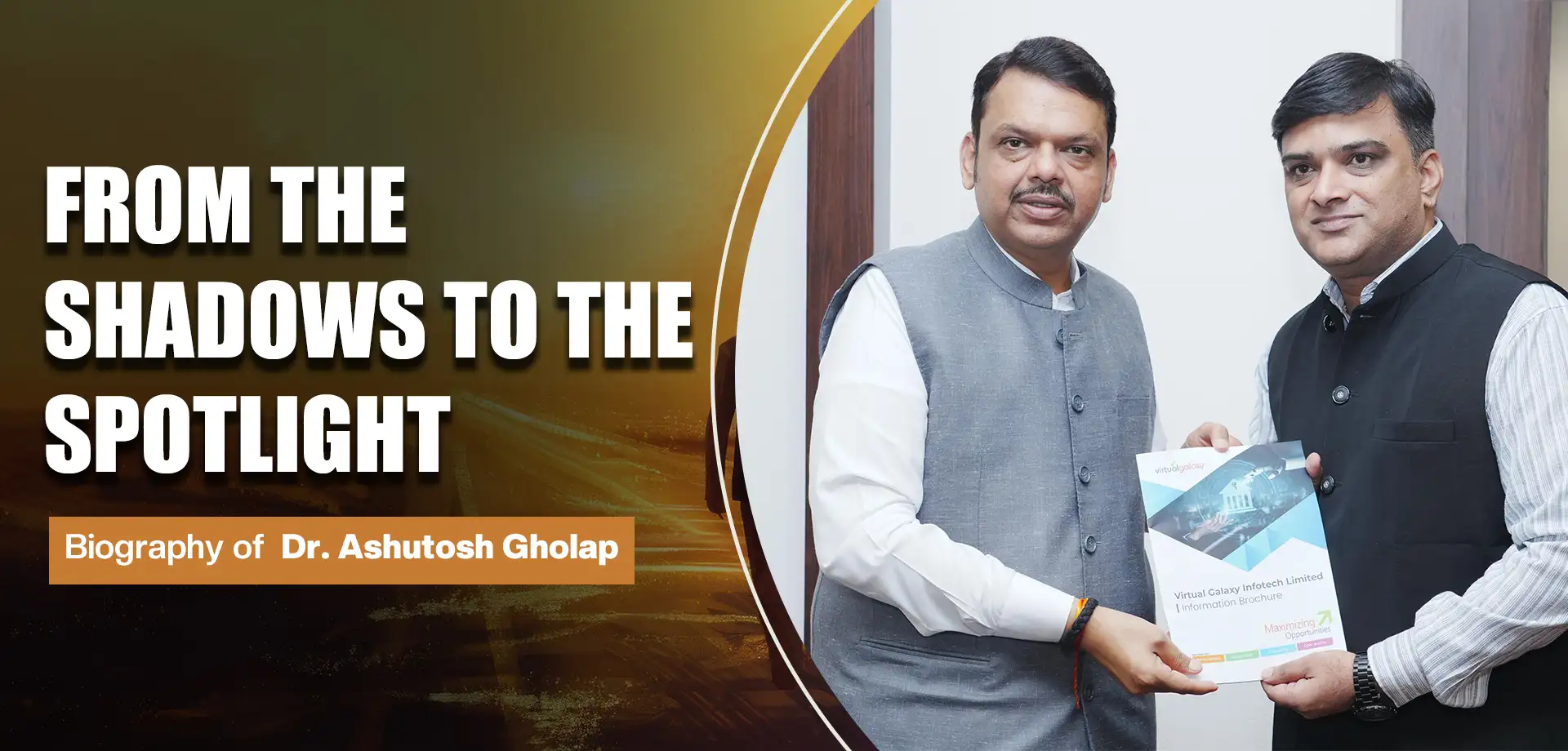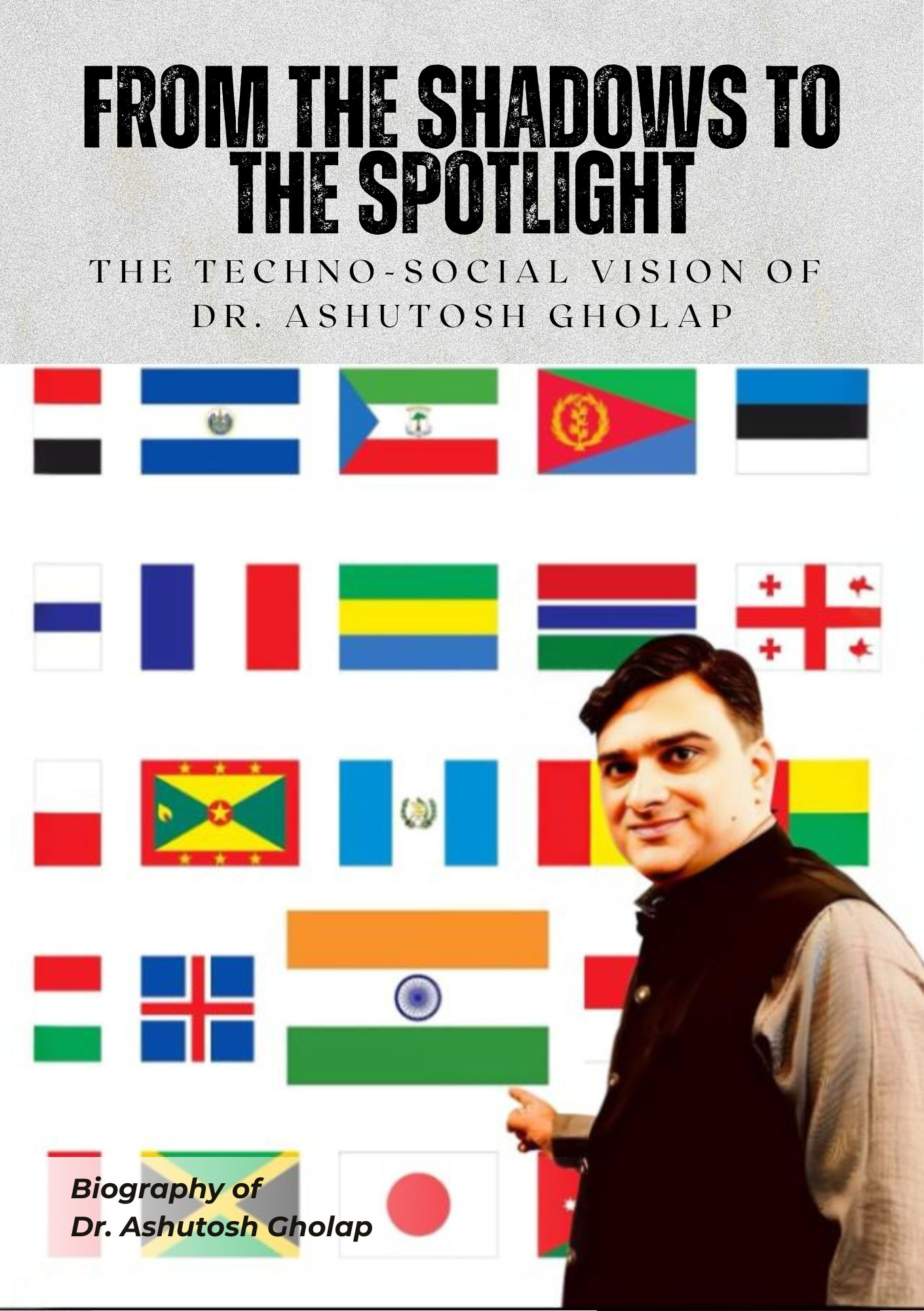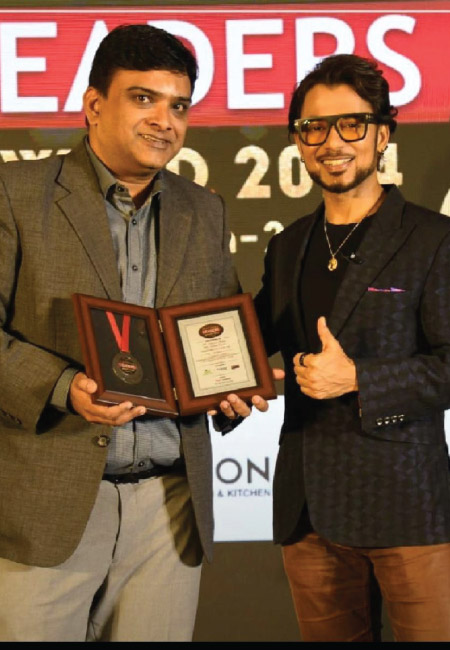

“Success is not in never falling, but in rising every time we fall.”
Introduction
The life of Dr. Ashutosh Gholap, beginning in the shadow of a Naxalite terrorized forest and ending in advanced Technology and Finance multinational boardrooms, is nothing short of an epic tale. The villages surrounding his hometown retain a form blend with his lifestyle. On May 30, 1979, Ashutosh was born to Mr. Vijay Gholap and Mrs. Vrunda Gholap in the defence enclosure of the Maharashtra tiger reserve. His first few schools were no different than from the ones that had sand bordered roads filled with attending school children. Ashutosh’s journeys were filled with encountering tigers and leopards. His endeavours equipped him with not only a satchel containing a laser torch and a tick-tock noise maker, but also the ability to conquer a range of social conflicts.
Ordinarily, one would start their education at a middle school, but that was not the case for Ashutosh because his first encounter with the Ordnance Factory Higher Secondary school occurred at a tender age, and it was during this stage where he underwent his vast swimming and marathon training sessions, this Laser Torch being his most prized possession. Based on personal experience, he understood quite early on that ‘Endurance comes with mental fortitude and pre-planning’, and for that very reason came his first sprint challenge – the unwavering blockade which was sharpened along the lines of relentless obstacles. Additionally, having limited options forced him to effortlessly work smarter and trace paths around the maze which encompassed hard work leading to good schools. Finally, these efforts initiated a civilized transition from a school focused on lifting the family financially to one focused on mechanistically advancing education. Although he attended what he calls ‘a regretful Directorate of Technical Education mumbai as a self-declaration of his academic downfall, it did lead him to excel at Sri Guru Gobind Singh College of Engineering, and cap off with a B. Tech in Electronics and Telecommunications, before mercilessly hunting down an MBA in International Business Admin from D.Y. Patil Pune. Watching horizon shifts birthed his entrepreneurial spirit, starting on humble grounds with a vending machine business, later succeeding curriculum-wise while laying foundational optical fibre sets for India’s first infrastructure during his Directorate level stint at Airtel’s 400 series rollout.
Phase 1 : Born in the Wild – Early Life and Schooling

Dr. Ashutosh Gholap was born on May 30, 1979, in the deep woods of teak and sal in Maharashtra, a region as alluring as it is perilous. The community surrounding Ordnance Factory Higher Secondary School lay bang in the middle of a Reserve Tiger Forest and was marked as a Naxalite zone. It grappled with issues of social and developmental strife. For young Ashutosh, every single day started before sunrise with no expectation of mirth, but rather, the solemn understanding that he would need higher levels of courage and focus.
The green and dangerous surroundings were unlike any classroom he had attended. Commutes to school were journeys into silence along dirt roads and were guided by the dim light cast by a laser torch. The steady tick-tock of a noisemaker accompanied these journeys. These were simple tools designed to prevent wandering tigers and leopards. Ashutosh and his classmates would freeze and hold their breath when the beam illuminated the eyes of creatures peeking through bushes. It was during such moments that he gathered inner strength.
This reality unfolded over and over again. The boy who learned to command his resolve alongside fear would carry that fortitude to the later stages of life. He knew very well that education was beyond the textbooks; it was about transcendence—escaping the annihilating forces that shackled his community. Mr. Vijay Gholap, a retired banker, taught his son the importance of saving and planning. Mrs. Vrunda Gholap, his wife, beamed with quiet determination. Together they epitomized the self-reliance he cultivated against all odds.
A military orderly atmosphere is what set apart the Ordnance Factory School backward India. From assembly exercises to lunch hour prayers, the entire school regime was governed as per militaristic order as in any defence establishment. There were stringent programs for eyes right to noon orders. Exercises in military precision formed part of education forward as much as ethos of the school begot duty, honour, serve—ideal that got imbibed in Ashutosh’s corporate and social life later. Disciplined Obedience Order was part of the curriculum taught by retired military teachers obsessed with time and controlled obedience. Like every other member of his family, Ashutosh too learned to be a voracious reader. There were dimly lit corners in more than one elaborate library in the house, and each isle was stocked with a ferris wheel of tomes on science, global technology events and international relations.
Regardless of the demanding routines, there was limited access to resources. There was inadequate power and the library collection was restricted and at times classes were cancelled by the teachers due to local strife. In spite of these situations, he was able to become even more goal oriented. He focused on accomplishing top school grades, winning scholarships, and gaining entry into an engineering college. His classmates remember his hunched and modest countenance, and also his distinct capability to concentrate intently to the level of being zoned into his own thoughts and actions.
Phase 2 : Struggle and Strategy – Academic Climb

Dr. Ashutosh Gholap’s story brings a fresh perspective to the world of higher education. His life was filled with challenges after he struggled to find the funding needed to pursue his education. He was forced into a working alternative engineering diploma through a government polytechnic. This retreat, described above, instilled in him a newfound tenacity, creativity, and a relentless belief in self-education emanating power. Dr. Ashutosh Gholap’s path to higher education was anything but straightforward. Financial constraints forced him to take an unconventional route—not directly into his preferred engineering stream, but through a polytechnic college (autonomous) diploma in Civil Engineering. After securing the desired percentage in his diploma, he got admission in a Government Engineering College for Electronics and Telecommunications, a detour that entailed sacrifices that would shape his work ethic, resourcefulness, and unshakeable belief in the transformative power of education.
After completing 12th grade, Ashutosh came face to face with a harsh reality: a glaring shortage of funds combined with cut-throat competition for coveted seats in the electronics-and-telecommunications programs. He set his sights on electronics but the only option available for a government seat was admission into civil engineering at a polytechnic, which was ostensibly designed for stumps who completed standard ten. Accepting this course would set him back at least two years to realize his dream. Instead of perceiving this as a setback, he took this as an opportunity for strategic tangential focus.
Enrolling at the government polytechnic, he encountered a different educational atmosphere than the defence-oriented school of his youth. Resources were scarcer, lab facilities more basic, and teaching largely lecture-based. Class sizes swelled, and many students treated the diploma as a fallback.
Ashutosh, however, approached it with the same rigor he had shown amid tiger-infested forests: he attended every lecture, pestered instructors with questions, and formed study groups to master complex math and physics concepts.
To cover tuition, books, and living expenses, Ashutosh turned to entrepreneurship. At that time, mobile telephony was burgeoning in India, and telecom companies offered lucrative commissions—₹2,500 per activated SIM card. His father, a former SBI banker, provided a modest pocket money of ₹650 per month. Undeterred, Ashutosh approached shopkeepers, street vendors, and local residents with promotional flyers and demonstration handsets. Within weeks, he was averaging 25–30 SIM activations monthly, netting upwards of ₹25,000—a sum nearly forty times his monthly pocket money.
Phase 3 : The Corporate Warrior
The story of Dr. Ashutosh Gholap demonstrates the teaching of schoolboys from forest-path schools to corporate strategists in the fastest-changing telecom regions in India. After earning his MBA, he joined the optical-fibre division of Reliance Industries Limited, which was a newly formed subsidiary where the “luxury” of connectivity turned into a matter of national necessity. He was allocated tasks related to market surveys and planning business, where he started understanding the complexities involved in fibre layouts, vendor negotiations, and securing the necessary government permits. Through his mentors, he came to appreciate that large-scale construction projects were as much about getting various stakeholders—state governments, local head contractors, and military defence installations—onboard as it was about calculating how deep the trench needs to be dug for mounting brackets and anchors and signal loss sniffing.
Ashutosh developed a reputation for field-tested rollout strategies and project dashboards within two years of joining the company. That didn’t mean, however, he ignored the data’s face people, including technicians enduring monsoon floods in trenches, landowners scared of encroachment, and villagers from remote regions who are about to gain access to high-speed internet. It was then that the first overarching business principles were shaped in his mind; social impact matters alongside profit margins.
Airtel launched their “400-number series” across Maharashtra and Goa in 2005, using television commercials to advertise their products. The initiative sought to improve enterprise communications by establishing an entire block of numbers for verticals like hotels, hospitals, and government agencies. He orchestrated map demands for forecast switching loads with the prerequisite of simultaneous switch-overs within service interruptions. Furthermore, he maintained the “400-series” sales brand position as one of trust and prestige by ensuring his trainees maintained the brand image as such. His efforts resulted in achieving a remarkable 98% first-quarter service uptime, surpassing the previous record.
In 2007, Ashutosh joined Tata Tele Services Maharashtra Limited, his third organization. For the next ten years, he single-handedly managed a growing list of company services including Tata Docomo’s GSM portfolio, Tata CDMA’s wireless data solutions, and Tata Internet Lease Line’s broadband corridors. Over the duration, he progressed from project manager to senior service-delivery head, undergoing a of period process realization. After attending a few self-diagnostic appointments, he began offering Six Sigma-inspired workshops focused on identifying root reasons for network downtime outages which reduced mean time to repair (MTTR) by forty percent. The expansion of Tata CDMA services in rural Maharashtra marked a stunning point in their business development. With the urban youth as the target market, it was assumed that the data throughput capabilities of the CDMA would work with them. Ashutosh held a different view; he believed that farmers would benefit greatly from real-time weather updates and commodity pricing feeds. He commissioned pilot kiosks in agricultural towns to showcase how farmers would be able to utilize data. In the end, the results surpassed expectations. There was a 25% overall increase in rural CDMA subscriptions, and 15% of participants using handheld data devices within a span of three months. This strategy was later on used in the company’s annual report under the title “inclusive connectivity.